With their luxurious texture and deep burnished autumnal hues, paisleys have been a decorator favorite for centuries.
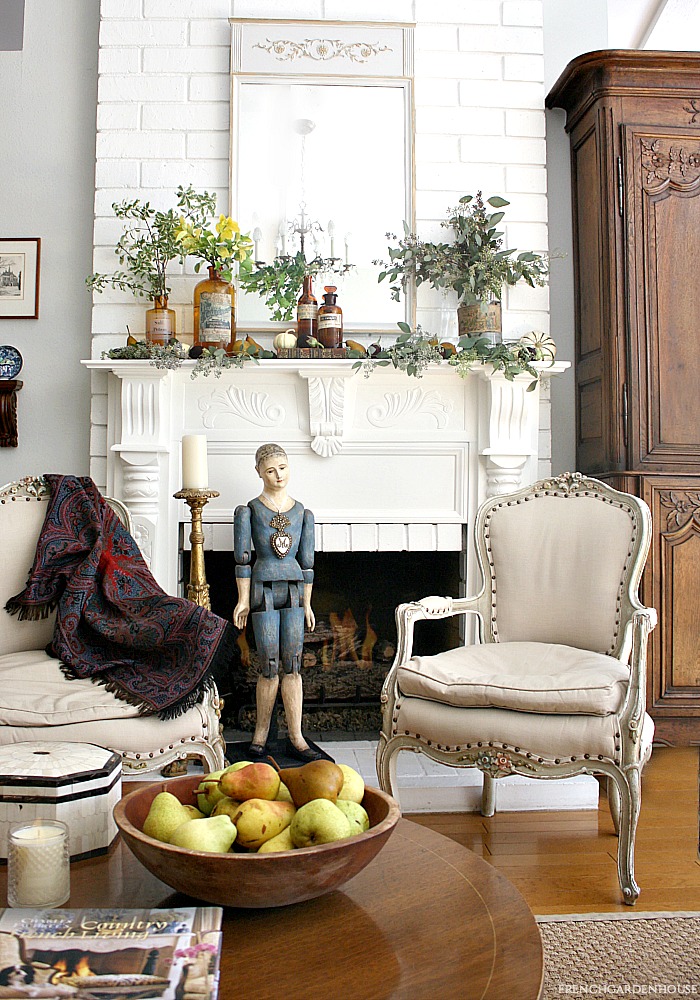
For effortless seasonal accents, a paisley shawl draped over the back of a chair warms up the whole room.

I am always looking for beautiful, colorful “paisleys” – whether shawls to be worn, or larger pieces of this historical textile – their rich colors, intricate designs and sumptuous “hand” is always a favorite!
In this post, let’s look at paisley’s rich and varied history!
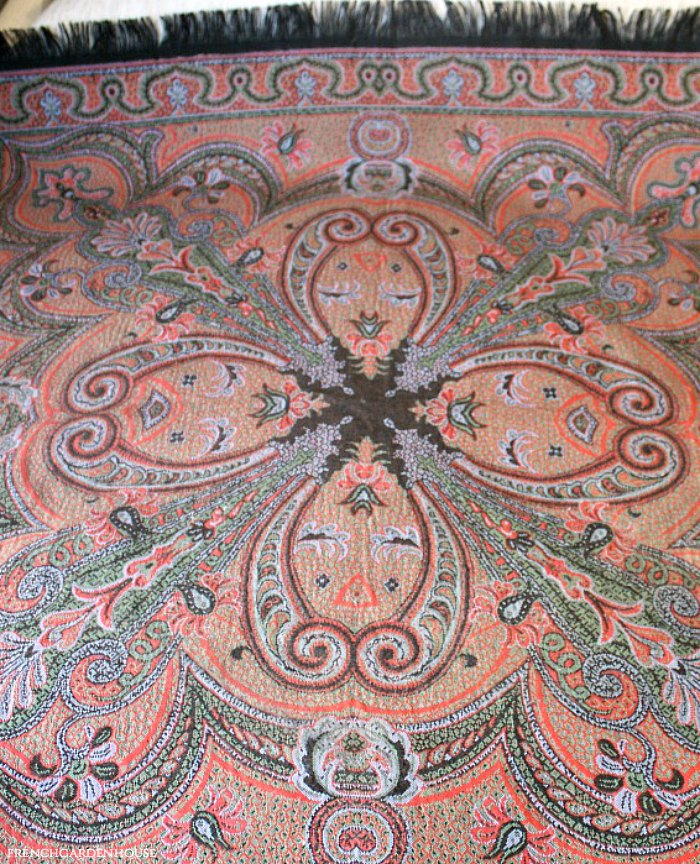
ANCIENT HISTORY.
Persian by origin, the early paisley designs trace their beginnings to Persia and the Sassanid Empire of 221 AD. The teardrop motif was called “Boteh Jegheh“, it was a motif designed for an old religion. The design represents a floral spray combined cypress tree, the symbol of life and fertility. During different times, people have interpreted the paisley design to a lotus flower, yin and yang, a mango, and many other things. The Babylonians thought of it as a date palm shoot. The date palm was an important part of their culture, it provided food, alcohol, wood, paper, string and more daily necessities, and it symbolized prosperity.
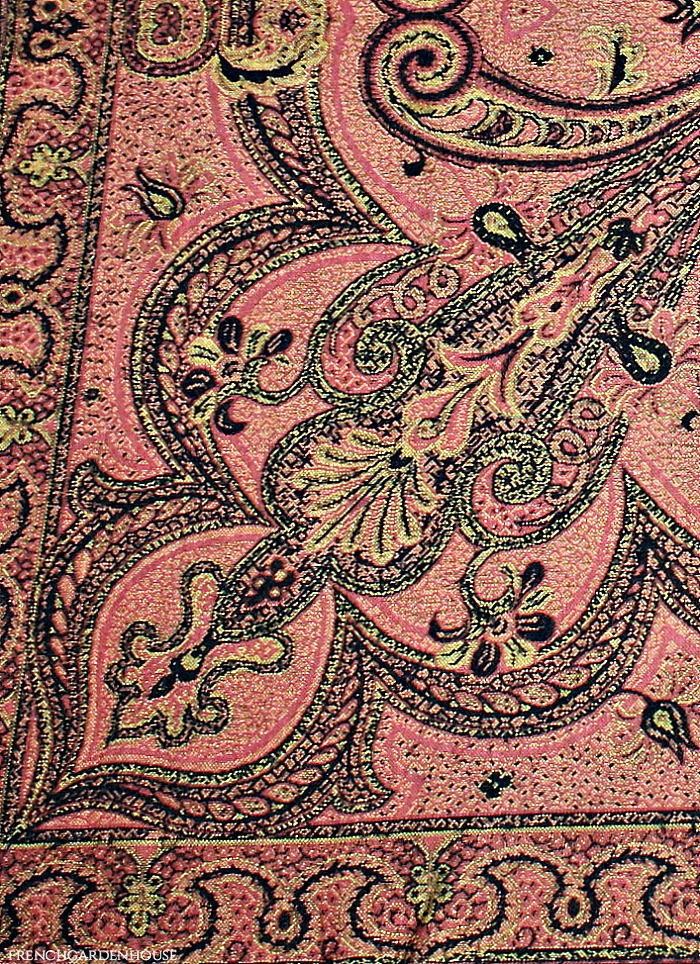
This design was the most popular in the Moghul period from 1526 – 1764 and was used on everything from carvings on buildings to the clothing and robes and court clothing of emperors, princes and holy men. During the 1600s, the pattern began to appear on shawls. In the first half of the 17th century, imports from the East India Company made “paisley” even more popular, by the 18th century Kashmiri princes began gifting shawls to the board and high placed officials in the East India Company who gave them to their wives, mothers and sweethearts.
At the same time, Napoleon’s officers who were stationed near Kashmir were buying the textiles and shawls and sent them to their beloved women in France. Napoleon’s wife Josephine collected paisleys, and by the early 19th century they were so much in fashion in Europe, that the supply could not meet demand, it was a fashion frenzy!

EUROPEAN PAISLEY.
In the 17th century, some of the finer Kashmir shawls {paisleys} cost almost as much as a small house! Because of that, European textile manufacturers were eager to produce European versions of the shawls and cloth. Manufacturers in Marseille, France started producing the patterns on their early textile printing machines.
Holland and England manufacturers followed suit, which caused the more expensive woven European shawls and fabric weaver’s to have too much competition. By royal decree, the production or import of any printed paisley was forbidden. The factories that formerly printed the paisley textiles turned to printing toile du jouy instead!
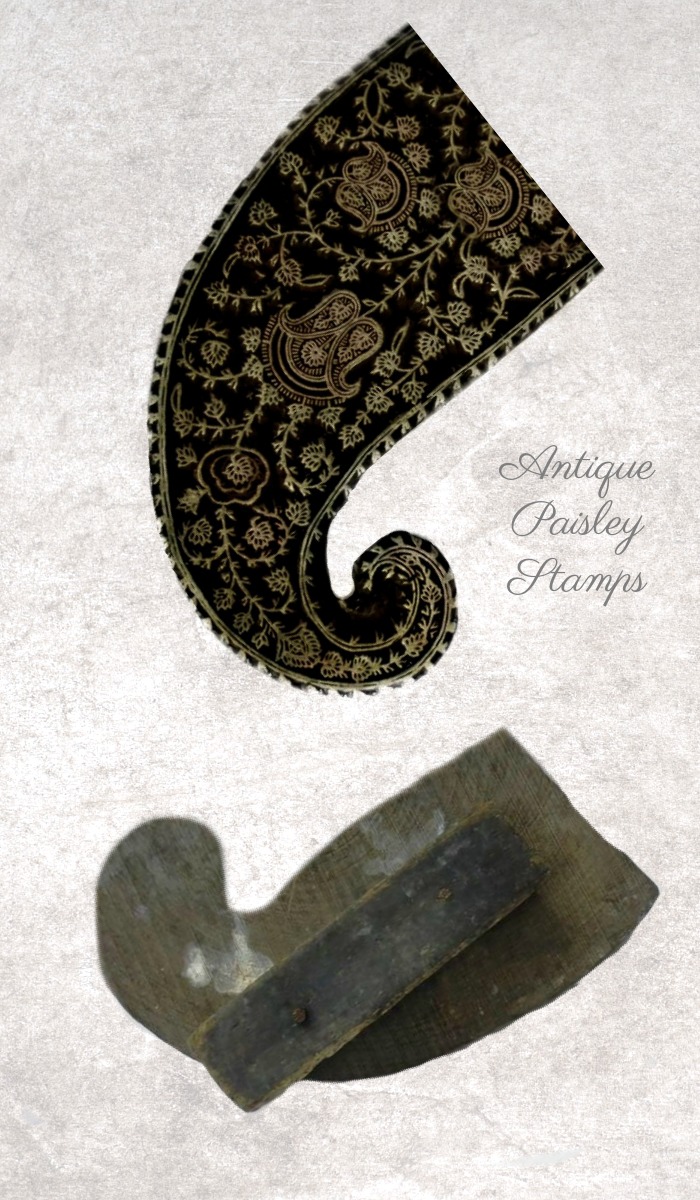
In the very early 1800’s, English and Scottish factories made worthy imitations of the Kashmir shawls. Since they couldn’t compete with the Kashmir pashima wool’s softness, they focused on more dazzling designs, and shorter production times which meant a better price point.

The best loved shawls were made in the Scottish town of Paisley {which is where the modern name we use comes from.} Their hand looms and jacquard looms were able to produce woven shawls in five colors, which was three more colors then the two colors other places could manage. The design became known as the Paisley pattern. By 1860, Paisley could make 15 colored shawls.
The history of paisley production in this period is like a good soap opera, there were patent wars, design espionage, pattern piracy, back stabbing and intrigue. Happily, the paisley design endured!
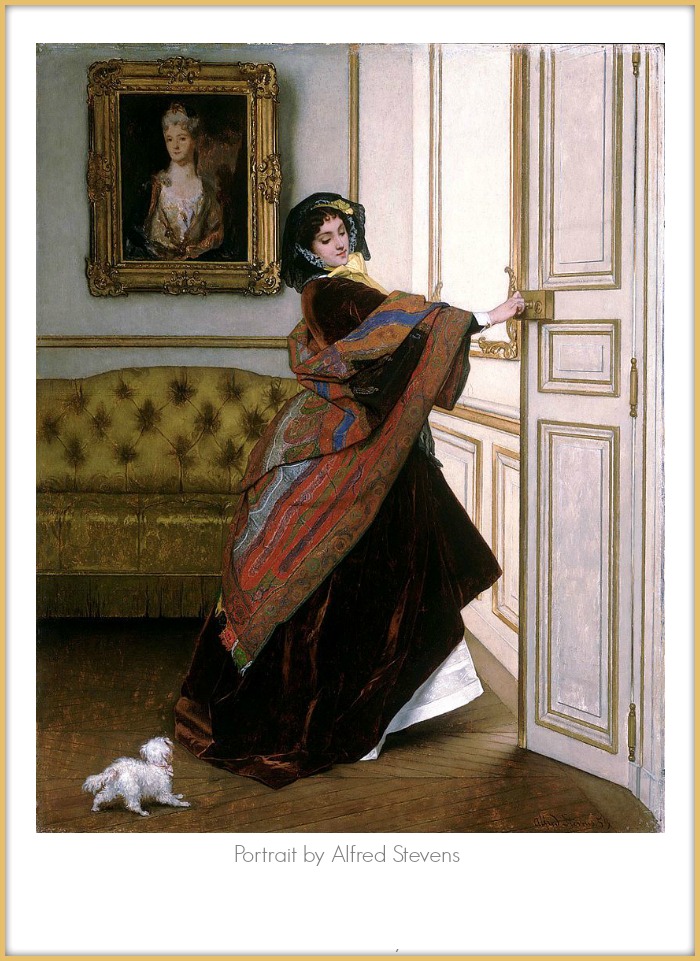
DECORATOR’S DARLING.
Paisley designs endure as classics. In the Victorian age, the first to love and wear the paisley shawls were the “bohemians” who thought of the paisley design as a bit rebellious. William Morris and the Arts-and-Crafts movement adapted the design, Pre-Raphaelite painters such as William Holman Hunt depicted sumptuous paisley textiles in their paintings. The paisley designs have such a rich history, and are one of the few ornate textile designs beloved by both men and women to wear.
Oscar Wilde loved nothing more than to lounge in his silk paisley smoking jacket and cravat said “One should either be a work of art or wear a work of art.”

It’s what has taken the paisley design from it’s early beginnings as coveted shawls only for the rich to printed bright cotton clothing worn by both celebrities and fashionistas in the 1970’s and 1980’s.

Paisley designs are still being re-interpreted by fashion and home decor designers. It’s a timeless classic that will never go out of style!

FUN FACTS:
- The Paisley pattern has been called : Tadpole by the French. Persian Pickles by the Americans. Little Onion by the Viennese. Welsh Pears by the Welsh.
- Paisley designs are prominent on Persian carpets, jewelry, paintings, jewelry, buildings, silver and almost everything under the sun.
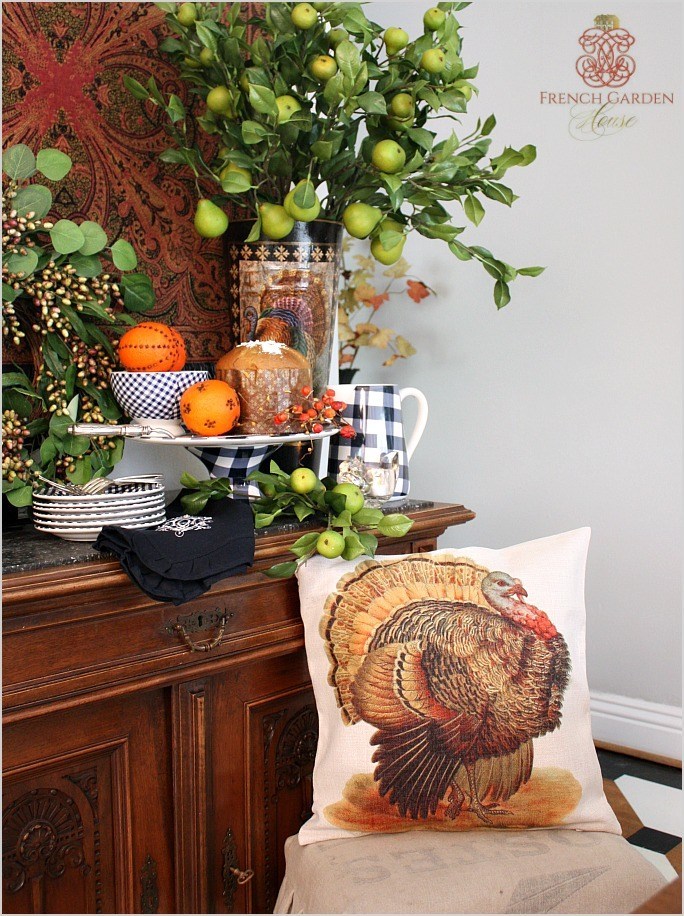
{I used an antique paisley shawl to cover our t.v. one year for a dinner party!}
TODAY:
These days, antique and vintage paisleys are coveted by collectors both for their decorative beauty to be used in the home, as well as for wearing.
SHOP OUR ANTIQUE PAISLEYS JUST ARRIVED!

If antique or vintage paisleys don’t fit your style or budget, may I suggest falling for this pattern on your table? Our cotton printed tablecloths in white an blue make a gorgeous paisley statement for any season!
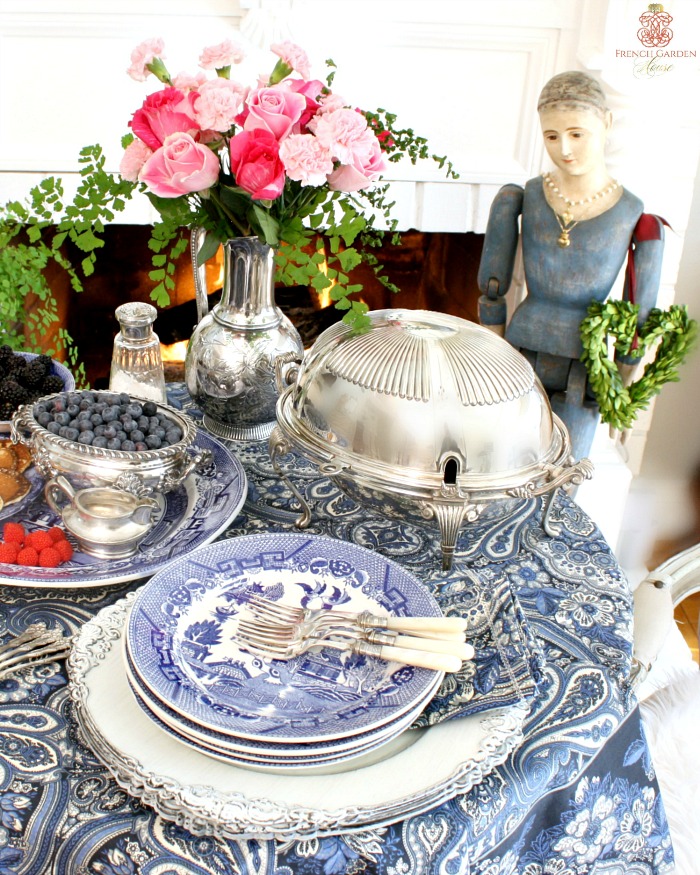
Blue New Cotton Paisley Tablecloth
Since the holidays are just around the corner, these cheerful red paisley napkins or apron are sure to bring a touch of this age old pattern and its warmth and nostalgia to your home.

NEW RED PAISLEY COTTON NAPKINS

DO YOU LOVE PAISLEY?
à bientôt

Shop for the best in French Antiques, furniture with the patina of age, vintage accessories to delight you and your family & friends, and French Country utilitarian pieces. Treasures that make your home fresh, beautiful, inspirational and uniquely yours. Visit our shop FrenchGardenHouse.com

 Your Cart
Your Cart
There’s just something about Paisley. And you have styled it all so well. Love the idea of covering up the tv!
Thank you Nancy! {I thought it was kind of a great idea myself! Because that big flatscreen did not look that great!}
I do love Paisley, Lidy. It always seems to add warmth to a room or to our souls when wearing it. Lovely post.
That is the perfect way to describe Paisley, Sandra. I love it!
What a great post! I have always loved paisley and your photos really captured the beauty of this classic. Best, Kim
Kim, thank you! It’s so nice to see you here, hope you have a beautiful day today.
Love these featured items, love paisley, and ALWAYS love learning the history!!
Hi Lidy! I absolutely have loved paisley ever since a little girl. My fav first grade dress was a high empress waisted beautiful teal fabric with gold paisley design. I wanted to wear it every day! Now at almost 60, I have a cotton tee with the exact same colour/print that I loved so dearly as a child. (I refrain from wearing it every day, though! haha!). Thanks for a beautiful paisley post! Blessings, Allison
Hi Allison! Your dress sounds so lovely! And the t-shirt sounds wonderful too..:)